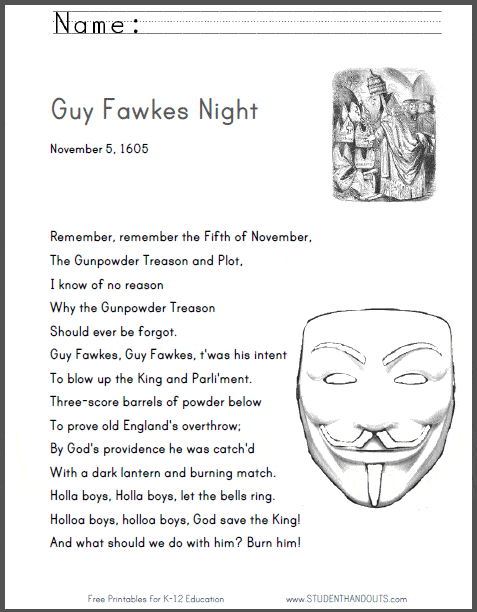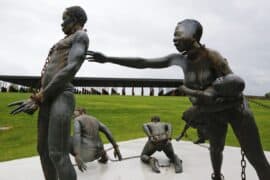Unwrapping History: The Story Behind ‘Remember, Remember the Fifth of November’
Hey there, amazing parents! As November approaches, you might find your little ones reciting a certain rhyme that echoes the feel of an old English chant. “Remember, remember the fifth of November” – this line might have caught your ear, and you’re wondering how to explain the historical depth behind it to your curious kids. Well, buckle up because we’re about to dive into a historical journey that brings to life the tale behind this fascinating poem!
The Origins of the Gunpowder Plot
First off, let’s set the scene. The “Remember, Remember” poem is intrinsically linked to the infamous Gunpowder Plot of 1605, a momentous event in British history. The poem encapsulates the tale of conspiracy, treason, and the aversion of potential disaster. So naturally, it’s essential to introduce your kids to the context that gave birth to this rhyme.
It all started with a group of English Catholics, led by Robert Catesby, who plotted to blow up the Houses of Parliament and kill King James I. Why? They were fed up with the persecution of Catholics in a predominantly Protestant England. Guy Fawkes, one of the most iconic figures in this narrative, was tasked with the critical role of igniting the gunpowder.
The Poem and Its Meaning
But hold on, what does this have to do with that catchy poem? The lines of the “Fifth of November” poem serve as a reminder of the Gunpowder Plot’s failure. Fawkes was captured before he could light the fuse, and the day is remembered as a celebration of the king’s survival. Here is the popular version of the rhyme your kids might hear:
Remember, remember, the fifth of November, Gunpowder treason and plot. We see no reason why gunpowder treason Should ever be forgot.
This poem is a gateway for kids to grasp the gravity of historical events in an easy-to-remember format. Just like fairy tales and nursery rhymes, historical poems pack a story into a few lines, making them incredibly sticky in young minds.
Guy Fawkes: The Man Behind the Mask
Now, onto the man of the hour, Guy Fawkes. Born in 1570, he is often the focal point in the retelling of the Gunpowder Plot. But, who was Guy Fawkes really, and how did he become a symbol of this foiled conspiracy? Was he the mastermind or just the most memorable character due to his intended role in the explosion? These questions are great conversation starters to engage your kids’ curiosity!
With a penchant for adventure and a history of military expertise, Fawkes was a logical choice for the explosives expert in the group’s plot. But, despite his commitment, the conspiracy unraveled before he could carry out the plan. His capture and eventual execution captured the popular imagination and placed him at the center of this historical narrative.
Today, Guy Fawkes is remembered in a myriad of ways, from the masks worn during the annual Bonfire Night celebrations to his depiction in various forms of media. But how does this relate to children learning about the past? It offers them a relatable figure through which to explore complex themes of rebellion, politics, religion, and monarchy.
Explaining the Significance to Children
So, how do you weave the dense tapestry of the past into accessible threads for children? It’s all about connection and storytelling. When discussing the Gunpowder Plot, draw parallels with contemporary events or use age-appropriate stories that deal with similar themes. The poem acts as an anchor, a repetitive and rhythmic tool to help them remember the event itself.
As we turn history’s pages, it’s important to provide context. Why not create a family tradition around November 5th by crafting lanterns or baking “treason treats” together? This enhances the learning experience, making it interactive and, most importantly, fun!
Remember that explaining historical events to children doesn’t have to be a daunting task. It’s an opportunity to ignite their imaginations, similar to how Guy Fawkes intended to ignite the gunpowder. The “Fifth of November” poem is a vehicle for learning, discussion, and family bonding.
Ready to light up your child’s historical curiosity? Continue the journey with us as we delve deeper into the events of the Gunpowder Plot and its continuing significance today. History is just a story waiting to be shared, and your kids are the perfect audience. Let’s make the past come alive and ensure the events surrounding the fifth of November are never forgotten!

Five Things Parents Should Know in Preparing for ‘Remember, Remember the Fifth of November’
- Understanding the Historical Context – Before diving into the poem, it’s key for you, as a parent, to grasp the intricacies of the Gunpowder Plot. Having a solid foundation of why it happened will empower you to break down the story into pieces that your child can easily digest. Remember, the plot was not just about Guy Fawkes; it was a culmination of political and religious tensions of the era. So, do a little homework to explain those broader issues with simplicity and accuracy!
- Discussing the Themes with Sensitivity – The Gunpowder Plot covers topics like religious conflict, political treason, and execution. Tailor these themes to be age-appropriate and use it as an opportunity to discuss the important values of tolerance and the complexities of history. Encourage open-ended questions to help them reflect on the implications of such an event in today’s world.
- Interactive Learning is Key – Kids often learn best through play and hands-on activities. To bring the history associated with the poem to life, engage in fun and educational activities, like creating a DIY Guy Fawkes puppet or depicting the Houses of Parliament with building blocks. These tangible experiences will make the history stick.
- Incorporating Visual Aids and Stories – Utilize picture books, age-appropriate documentaries, or even visit historical sites (if possible) to spark interest. Telling the story of Guy Fawkes as a bedtime story, with colorful illustrations and exciting narrative twists, can make learning about this event something they look forward to.
- Crafting Family Traditions – Establishing your own November 5th traditions will give children a personal connection to the history. Whether it’s making a “Bonfire Cake” or sitting around a campfire talking about the historical significance of the day, creating memorable traditions will reinforce the educational aspect of the poem.
Delving Deeper into the Celebration of Bonfire Night
While understanding the past is vital, let’s not forget the vibrant traditions that have evolved from the Gunpowder Plot. Bonfire Night, or Guy Fawkes Night, is an annual celebration on November 5th, where fireworks light the sky, and effigies of Guy Fawkes burn on bonfires. Involving your children in the festive aspect allows them to see how history shapes cultural celebrations.
Explain how fireworks represent the explosives that were never used, and the “guys” on bonfires symbolize the potential danger averted. Use these visuals to reinforce the historical lesson in a way that’s both thrilling and meaningful for children!
Continuing the Conversation
Indeed, remembering the Fifth of November is not just about the past; it’s an ongoing dialogue about how history influences our present. It’s an excellent chance to talk with your kids about current events and the importance of democracy, peaceful protest, and the rule of law. Relating the Gunpowder Plot to contemporary issues can help children understand the importance of learning history to actively participate in shaping a better future.
Ultimately, ‘Remember, Remember the Fifth of November’ is more than a poem; it’s a rich historical narrative that offers lessons about perseverance, justice, and the power of memory. As you guide your children through the echoes of 1605, you’ll find yourself enriching their intellect and stirring their imagination. Historical awareness starts with the stories we tell and the details we choose to highlight, so let’s make it engaging, educational, and exceptionally fun!
See more great Things to Do with Kids in New Zealand here. For more information see here
Disclaimer
The articles available via our website provide general information only and we strongly urge readers to exercise caution and conduct their own thorough research and fact-checking. The information presented should not be taken as absolute truth, and, to the maximum extent permitted by law, we will not be held liable for any inaccuracies or errors in the content. It is essential for individuals to independently verify and validate the information before making any decisions or taking any actions based on the articles.




